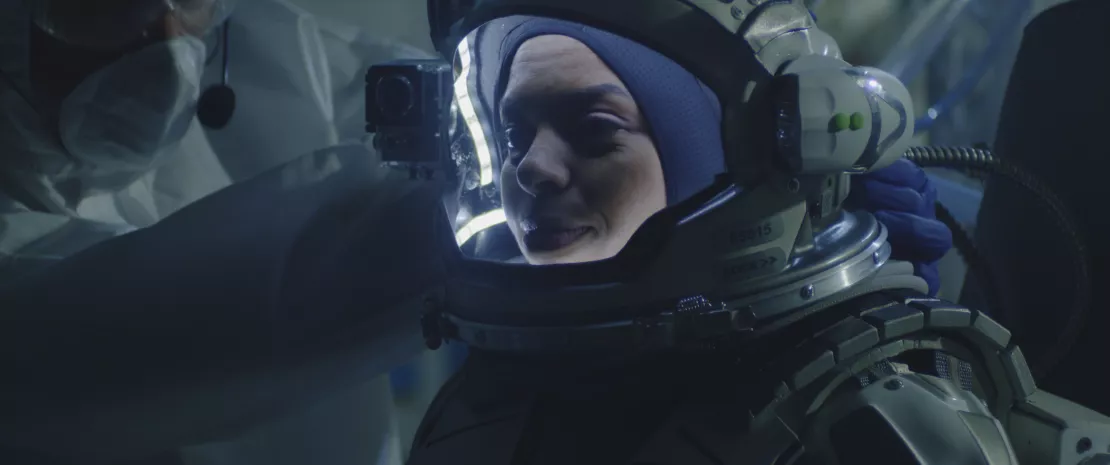Osteoporosis: using bacteria to reduce fractures?
According to a study published in Cell Report, the gut microbiota of mice on a nine-week space trip adapted to limit microgravity-linked early osteoporosis, the phenomenon of bone loss observed in astronauts 1.
- Learn all about microbiota
- Microbiota and related conditions
- Act on your microbiota
- Publications
- About the Institute
Healthcare professionals section
Find here your dedicated section
Sources
This article is based on scientific information

About this article
Cosmic radiation, sleep disturbance, loss of bone density... space travel is no easy ride. If we hope to one day wake up fresh and ready to go the day after our arrival on Mars, we’ll need to understand how space affects our body and how to mitigate these effects. This is the goal of the NASA-led Rodent Research 5 mission, which studies changes in the bone structure of rodents sent to the International Space Station (ISS) for several weeks. The first results are surprising: the digestive microbiota seems to adapt to microgravity, with modifications that limit bone loss.
Bone, a constantly changing tissue
Did you think that the bone, once it has reached its maximum size, does not change? Think again! The bone is constantly being remodeled, even in adulthood. Two types of cells are involved in this phenomenon: osteoclasts, which break down old bone, and osteoblasts, which form new bone. When we are healthy, their respective activities are balanced, and the bone is constantly regenerated. However, at menopause, the lack of estrogen promotes the action of osteoclasts and slows down that of osteoblasts: bone is resorbed more and its architecture becomes fragile. This is osteoporosis 2.
Microbiota influenced by space
Mice that spent nine weeks of their short lives on the ISS (the equivalent of several years for an astronaut) returned to Earth with a more diversified microbiota and whose composition had evolved. Certain bacterial species became more abundant, particularly Lactobacillus murinus and Dorea sp., which seem capable of producing molecules known to promote bone regeneration.
1 in 3 women over age 50 years will experience osteoporotic fractures
1 in 5 men over age 50 years will experience osteoporotic fractures
(sidenote: Johnston CB, Dagar M. Osteoporosis in Older Adults. Med Clin North Am. 2020 Sep;104(5):873-884 )
Indeed, it is a mistake to think that bone becomes a “dead” tissue once growth is complete and adulthood reached. On the contrary, bone tissue is constantly being remodeled through a balanced and continuous process of destruction and rebuilding. However, this balance can break down in the event of illness such as osteoporosis, or during space travel, since the absence of gravity disrupts the process. However, Lactobacillus murinus and Dorea sp. appear to activate when their mouse host is weightless in space, producing molecules that promote bone regeneration. In fact, some of these compounds are more abundant in the blood of rodents that travel in space.
Implications for both astronauts and osteoporosis
In other words, it is as if the mice’s gut microbiota helps their bodies to compensate for the bone loss associated with microgravity in space. However, despite the appeal of this hypothesis, it needs to be validated before any conclusions can be drawn from it in relation to microbiota and bone health. The implications for treatment may be far-reaching: the identification of probiotic bacteria involved in maintaining bone density might not only help astronauts stay healthier in space, it may also benefit many terrestrial patients suffering from bone diseases such as (sidenote: Osteoporosis Osteoporosis is a "skeletal disorder characterized by compromised bone strength predisposing a person to an increased risk of fracture". NIH Consensus Development Panel on Osteoporosis Prevention, Diagnosis, and Therapy, March 7-29, 2000: highlights of the conference. South Med J. 2001 Jun;94(6):569-73. ) .
Worldwide, osteoporosis causes more than 8.9 million fractures annually, resulting in an osteoporotic fracture every 3 seconds 3.













